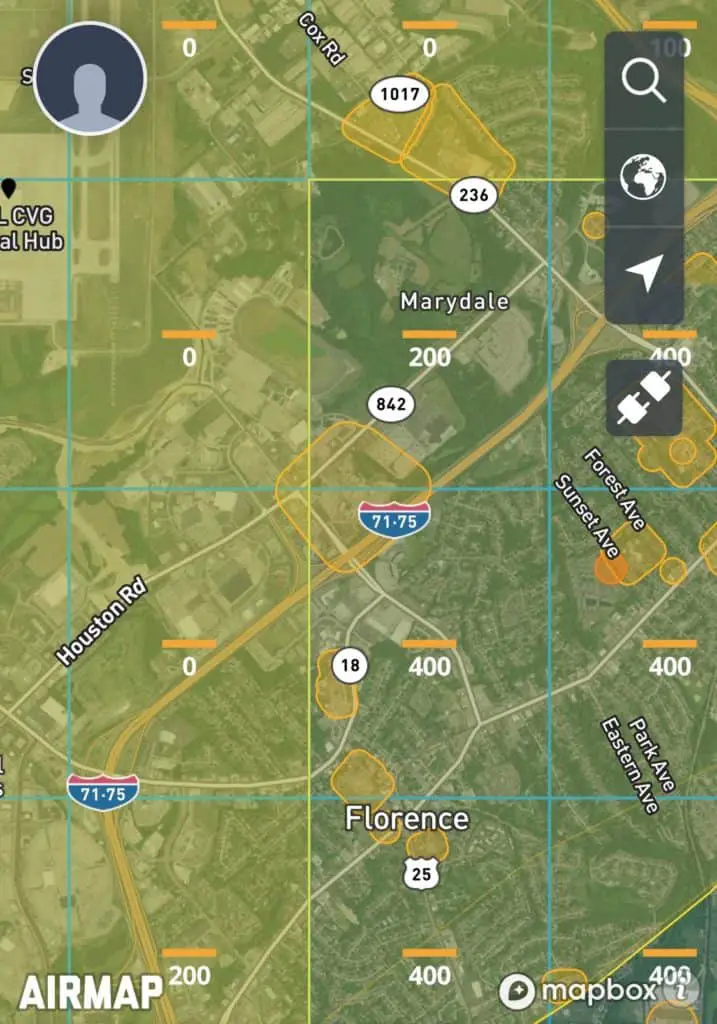There are no rules that prohibit you from flying your drone near a heliport (also called a helipad). However, the FAA recommends that you treat the heliport the same way that you would treat an airport. So, if the heliport is in controlled airspace, you will need airspace authorization to fly there. That said, even when you don’t need authorization, there are a few other things you can do to avoid issues when flying your drone near a heliport.
So, What am I Required to do if I Want to Fly Near a Heliport?
The first thing you will need to do is to treat the heliport the same way that you would treat an airport. Obviously, the way you treat an airport depends entirely on what type of airspace surrounds the airport. If the heliport that you want to fly near is not in controlled airspace, the FAA says you simply need to “give way to all manned aircraft and not pose a collision hazard.“
If the heliport is within controlled airspace, you’re just going to go through the same procedures you’d normally use at any other airport to get authorization to fly. This will probably happen by using your favorite LAANC provider (Airmap, Kittyhawk, etc.). If the heliport is in one of those unfortunate places where you can only get manual approval, you’ll need to submit your request through the FAA’s Drone Zone. Then all you can do is sit back and wait.
Go Above and Beyond What is Required
While the rules surrounding helipads just aren’t that complicated, there are several things you can do to be a responsible drone pilot. The first is just to be aware of the heliport. Obviously, if you need airspace authorization to fly near a specific heliport because it is in controlled airspace, you will be aware that it is there. But, because heliports aren’t necessarily within controlled airspace, they can be easy to miss.
Take the picture below for example. The orange circle in the middle is a heliport at a hospital close to my house. But you have to zoom way in to get the text telling you what it is. It’s inside of controlled airspace, which means I would need to get airspace authorization to fly here anyway but there’s so much other stuff circled in orange (schools, jails, etc.), I can imagine it would be easy to lose sight of the fact that there’s a heliport right in the middle of that map.

Another thing you may want to do (especially if you fly near a specific heliport a lot) is reach out to the heliport. Opening the lines of communication is always a good idea. In fact, its an idea that the FAA encourages. Specifically, the FAA’s website states that although you aren’t required to contact heliports that are within Class G airspace, “they may welcome the opportunity to engage in a dialogue about their concerns and needs so you can fly neighborly and safely.“And really, there’s no harm in reaching out.
I’ve got a friend that is a flight nurse for a few local hospitals and he’s told me that drones make his flight crew nervous when flying (both at heliports and when he’s on scene for an accident). I know he’d welcome the opportunity to speak with a drone pilot that wants to fly near the heliports he uses.
Finally, while you aren’t required to have a visual observer, if your flight is near a heliport, it could totally be worth the effort to bring a friend along for the flight, if for no other reason than they could be another set of eyes and ears for helicopters.
What am I Required to do if the Hospital has a Heliport?
If you want to fly near a hospital with a heliport, the guiding principle should still be that you are looking to avoid creating a collision hazard. While the rules about heliports are the same whether that heliport is at a hospital or not, if you want to fly near a hospital heliport, I would do everything I could to make sure I’m flying safe. Re-read the section above if you need to, but above all, be safe.
Also, keep in mind that any helicopters flying to heliports at hospitals are probably carrying someone that needs immediate and life-saving medical attention. Do you best to complete the job you’ve come for quickly and then land your drone. Even if you’re doing your best to fly safely, an approaching life flight may still see and be aware of your drone and this your delay its landing at the heliport. I don’t know about you but if I (or someone I loved) was being life flighted to a hospital, I would hope that a drone pilot would stop all work while the flight was coming in so that I could get medical attention.
Drones Pose a Real Threat to Helicopter Flight (Even When You Aren’t Close to a Heliport)
Here’s another scenario. Imagine you’re flying your drone legally (not necessarily near a heliport or hospital) to get some low altitude aerials of a piece of commercial real estate. Your location is not within controlled airspace and you’re keeping your drone within line of sight at all times. Even still, the terrain on this property peaks at a hill on one side and the top of the hill has a tree line. As you are working on getting a circular shot revolving around the building, you start to hear the thump-thump-thump that can only be a helicopter, and no sooner than you hear the sound, do you see the helicopter coming over the hill at a very low altitude. You are far enough away from the hill that you can quickly land until the helicopter passes by. Not a close call, but definitely closer than you’d want to be to a manned aircraft.
This scenario is very real and I’ve seen helicopters around where I’m flying more times than I can count. Honestly, helicopters flight should probably be one of your biggest concerns when you are flying your drone.
The FAA’s guide to Low-Flying Aircraft says:
Helicopter operations may be conducted below the minimum altitudes set for fixed-wing aircraft. The reason: they have unique operating characteristics, the most important of which is their ability to execute pinpoint emergency landings during power-out emergencies. Furthermore, the helicopter’s increased use by law enforcement and emergency medical service agencies requires added flexibility.
That means a helicopter can legally fly below 500 feet above the surface in some places. If I can fly my drone up to 400 feet above the ground and the helicopter can fly below 500 feet above the ground, there is certainly some room for overlap here. My point here is not to freak you out, but to make you understand that helicopter flight is something you ALWAYS need to be on guard about. I live near a major airport and I can’t even tell you how often helicopters fly directly over my house at 300-400 feet AGL. It’s very common.
In my experience, you can typically hear a helicopter well in advance of when you will see it. But what about when you can’t hear it very well or it seemingly comes out of nowhere? Your awareness of your surroundings is paramount in these situations and it can be the difference between a mid-air collision and you safely landing your drone until the manned aircraft passes by. Stay on your guard, especially when you are flying near a heliport.

